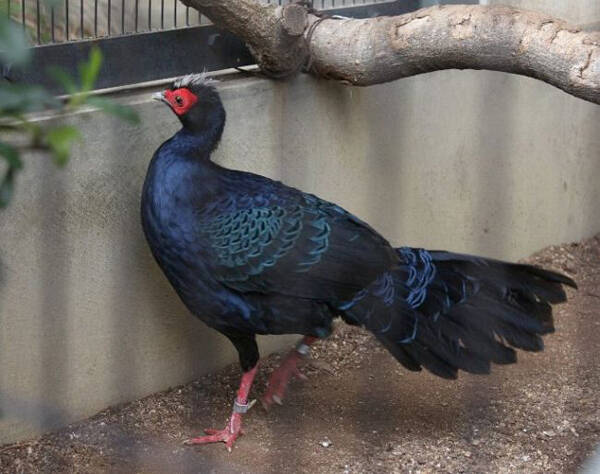Lophura edwardsi
IUCN
LCBasic Information
Scientific classification
- name:Lophura edwardsi
- Scientific Name:Lophura edwardsi,Edwards's Pheasant
- Outline:Landfowl
- Family:P.genus P.family
Vital signs
- length:58-65cm
- Weight:About 1115g
- lifetime:No textual research information is available
Feature
The rooster has a towering white crest and black, blue-shimmering plumage
Distribution and Habitat
It is endemic to central Vietnam, on the eastern side of the Anamite Mountains. It is distributed in four provinces, Ha Tinh, Quang Binh, Quang Tri and Hue.
Inhabits lowland areas with horizontal or gently sloping covers of moist secondary evergreen forests, enclosed canopies, ample undergrowth of palm trees and bamboo.
Appearance
Swinhoe's weight was 1115 grams; Body length 58-65 cm; The male's tail is 24-26 cm long and the female's is 20-22 cm long. The rooster has a stunning black plumage with a shimmering blue sheen, and the wing coverings have metallic green wavy patterns. In stark contrast to this rich black plumage is a short, towering white crest with sharp red bare skin on the cheeks and red skin on the legs. The female does not have the crest of the male, and the plumage is duller, uniform grayish-brown, with pale wings and a black tail, but the legs and facial skin are the same as those of the male. The chicks have the same plumage as the females.
Lophura edwardsihatinhensis has two subspecies: the named subspecies and the Northern subspecies (Lophura edwardsihatinhensis), which are very similar in that the northern subspecies has a slightly longer white crest and four white central tail feathers, whereas the named subspecies is blue in this case. The female northern subspecies is al
Details
Lophura edwardsi Edwards' s Pheasant, there are 2 subspecies.

Lopheus is a mysterious bird that has rarely been observed in the wild, so little has been documented about its biology and ecology, including details of its diet. Mating and nesting behaviors have not been observed in the wild, only in captivity. They are fed seeds, vegetables and insects.
During Pheasant's breeding, males present themselves to females by raising their crowns, puffing up their back feathers, and rapidly fluttering their wings. The breeding period is usually between March and May, and each clutch usually produces 4-7 eggs, and the incubation period takes 21-22 days. In general, individuals only reproduce after two years of age.

It is one of the most endangered pheasants in the pheasant family; both subspecies are listed as endangered, threatened by deforestation, hunting, and the use of defoliants during the Vietnam War. Surveys since 2000 have documented that any remaining wild population is small (2012), and it has even been suggested that the species may already be extinct in the wild. In the absence of better data, the number is estimated to be between 50-249 mature individuals (2012). Any remaining subpopulations are likely to be very small and declining.
Listed in the International Union for Conservation of Nature Red List of Threatened Species (IUCN) in 2016 ver 3.1 - critically Endangered (CR).
Listed in Appendix I, Appendix II and Appendix III of the Convention on International Trade in Endangered Species of Wild Fauna and Flora (CITES) 2019 edition.
Protect wild animals and eliminate wild meat.
Maintaining ecological balance is everyone's responsibility!








